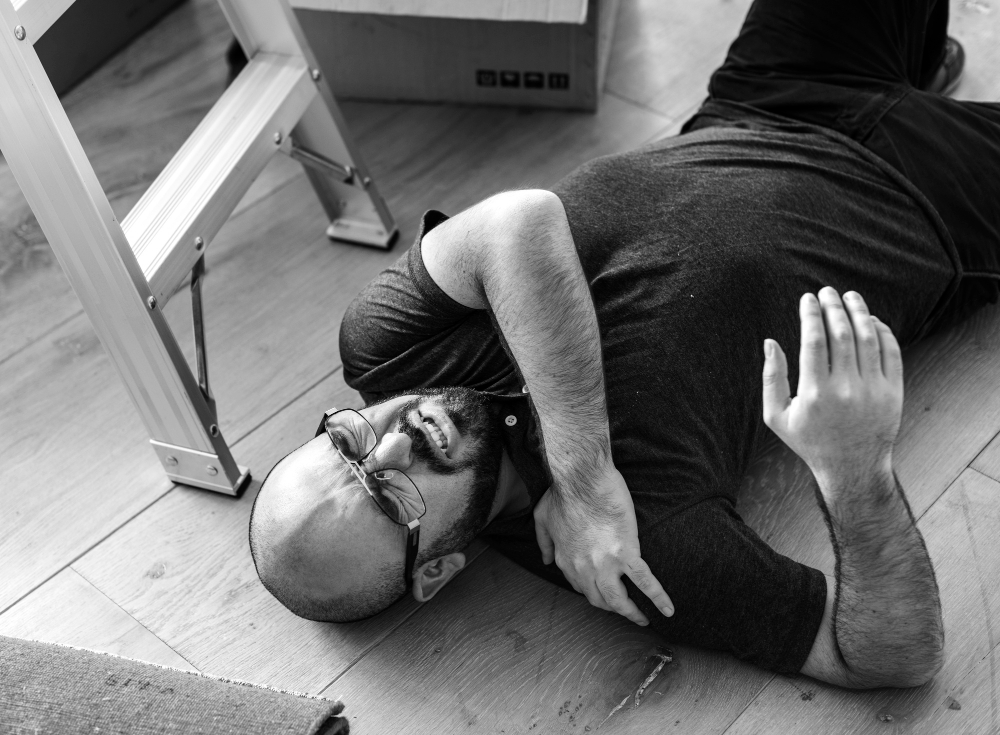
Slip-and-fall incidents are considered some of the most common yet serious accidents that can happen. These falls can occur in personal and public spaces and are caused by various reasons, including adverse weather conditions, neglect, inadequate maintenance, and hazardous premises; leading to severe injuries. It is important for individuals to understand how to prevent slip and fall accidents and minimize the liability associated with them. This blog will discuss essential tips on protecting yourself from personal injury slip and fall accidents and securing your safety for the future.
Strategies to Reduce the Risk of Slip and Fall Personal Injury Accidents
According to the Canadian Institute of Health Information, around 654,000 individuals visited emergency departments for injuries sustained after unintentional falls, constituting nearly a third of all reported ED visits for injury and trauma last year. Knowing how you can safeguard yourself in such a situation becomes paramount. The following are some of the tips to prevent future misfortunes in various settings:
-
Determine the Cause
In general, a slip and fall occurs when an individual loses traction or stumbles. Besides this, there are various other reasons that contribute to the occurrence of slip and fall cases, which include the following:
- Wet or greasy floors
- Dry floors with wood dust or powder
- Uneven walking surfaces
- Polished or freshly waxed floors
- Loose flooring, carpeting or mats
- The transition from one-floor type to another
- Missing or uneven floor tiles and bricks
- Damaged or irregular steps; no handrails
- Sloped walking surfaces
- Shoes with wet, muddy, greasy or oily soles
- Clutter
- Electrical cords or cables
- Open desk or file cabinet drawers
- Damaged ladder steps
- Ramps and gang planks without skid-resistant surfaces
- Metal surfaces — dock plates, construction plates
- Weather hazards — rain, sleet, ice, snow, hail, frost
- Wet leaves or pine needles
Recognizing these hazards can make you more vigilant in potentially dangerous areas. Furthermore, it helps you to spot possible hazards before an accident occurs, allowing you to take preventive action when necessary.
-
Wear Appropriate Shoes
Opting for appropriate shoes is one of the easiest and most effective techniques to prevent slip and fall accidents. Invest in shoes with slip-resistant soles that help deliver traction on various surfaces. Whether you are at home or in the workplace, ensure to clean up any wet surfaces or spills immediately and use signage to warn others of potential hazards. In addition to this, make sure that walkways and other surfaces are properly maintained. Report any cracks or uneven flooring to your maintenance department so they are repaired promptly.
-
Create and Maintain Proper Lighting
Do you know that proper lighting plays a crucial role in protecting individuals from accidents? Improper lighting can occur for various reasons, such as poor building design, neglected maintenance, failure to replace burned-out light bulbs, etc. Remember, poor lighting makes it difficult to estimate the shape, size or depth of space or objects, thus leading to various health hazards. Common areas where inadequate lighting often contributes to slip and fall injuries include:
- Parking lots
- Pool areas
- Stairwells
- Hallways
- High-traffic areas in restaurants, theatres, or grocery stores
- Seating areas in restaurants and bars
- Restrooms
In such situations, make sure to repair fixtures, switches and cords immediately if they malfunction. Consider utilizing proper illumination in walkways, ramps, staircases, hallways, basements, construction areas and dock areas to reduce the risks of slip and fall accidents.
-
Being Cautious of Your Surroundings
Nowadays, it is common for individuals to get distracted while walking. From listening to songs while walking to thinking about the everyday chores, looking at a phone or being stressed about something – this can increase the chances of slip and fall injuries.
When walking in icy conditions, it is essential to stay alert and mindful of your surroundings. Take shorter steps and avoid areas that are icy or look uneven. To safely test the ice, hold onto your car door or another sturdy object for support while gently tapping the surface with one foot. Be aware that some ice can be more slippery than others.
Conclusion
Slip-and-fall incidents rank among the most frequent accidents and carry potential legal consequences. By implementing the safety measures outlined in the blog, you not only create a safer environment but also demonstrate a commitment to safety for all individuals.
Have you been injured in a slip-and-fall accident? SG Injury Law is here to help you. Working with an experienced slip-and-fall accident lawyer can simplify the process and boost your chances of obtaining the rightful benefits and compensation that you deserve. So don’t wait to secure your future—get in touch with an Ottawa slip and fall lawyer today and take the first step towards a resolution of your claim.
